CEDIA Expo: A/V & Home Automation
Snapshot of the 2024 CEDIA Expo
In my October 2024 ASHB Journal article I surveyed the diversity of products and technologies showcased at the Consumer Electronics Show (CES), held annually in January. It has been the largest trade show in the United States1. CES started in 1967 as showplace for audio and video (A/V) retailers to choose TVs and hi-fi equipment for the next selling season. As I noted, CES has expanded well beyond A/V. I have been receiving promotional materials from CES 2025 exhibitors with none touting A/V and a few advertising home automation innovations. That’s why I continue to attend the CEDIA Expo.
The CEDIA Expo offers insights into A/V and some high-end home automation technology. This year the CEDIA Expo was combined with the Commercial Integrator Expo at one show in Denver September 5-7, 2024. CEDIA is the Custom Electronic Design and Installation Association, a trade group of about 3500 “Smart Home Professionals.” [cedia.org] CEDIA offers education and certification to members, and advocates for legislation favorable to home-system installers. CEDIA members serve the affluent market by helping owners select home technology, integrate products from multiple manufacturers, install the equipment, train the home occupants, and maintain the systems.
The total attendance for the combined expo was 15,200 persons, compared to 15,541 in 2023. (CES was about 135,000 in 2024 and 180,000 in January 2020.) About 5000 were attending CEDIA for the first time. The show featured 400 exhibitors compared to 340 in 2023, with 90 there for the first time. Traditionally, the show has attracted those who serve the residential market. However, according to the show director2, the inclusion of the Commercial Integrator Expo with the CEDIA Expo is “further evidence that the line between residential and commercial projects has been crossed – or crossed out entirely, in some cases – by both integrators and manufacturers.”
Technology trends at CEDIA 2024
The key technology trends featured in this article include:
- MicroLED TVs covering entire walls offered by about a dozen companies as alternatives to large-size TVs and projector TVs.
- Multi-channel audio predominantly for whole-house audio and home theater surround sound.
When I asked vendors about providing an audiophile-quality experience, many said:
- They focus on whole-house audio or home theaters, not the “two-channel stereo market.”
- They produce good sound, but not audiophile quality sound (with some exceptions, among the products I feature in this article).
This article is a sampling of the companies I talked with at CEDIA 2024. Included are descriptions and photos of products from these companies. I provided a web address (URL) for each manufacturer and a video URL about the product on YouTube. Each URL was checked before publication, but may change or be removed by the creator or by YouTube.
Heavy-duty amplifiers (ati-amp.com)
Amplifier Technologies Inc. (ATI) of Los Angeles makes audio amplifiers with high quality power transformers. As ATI explained, “For the transformer’s core we use MOH [a type of steel] with magnetic properties that increase efficiency 18% over conventional units. Each amplifier channel gets not only its own set of transformer windings, but its own rectifier and storage capacitors, thus giving each channel its own separate power supply.” Other hardware features include:
- Large heat sinks
- Circuit boards made from fiberglass-reinforced epoxy laminate
- Gold plated RCA jacks and robust XLR connectors with gold contacts
- Fast optically-coupled protection circuits that are removed from the signal path so they don’t affect the sound quality
ATI offers Class A/B and D amplifiers; distribution amps, and Pure Balance “incorporating substantial power supplies to ensure maximum power to all channels as listening and cinematic sound demands are placed upon the amplifier.”
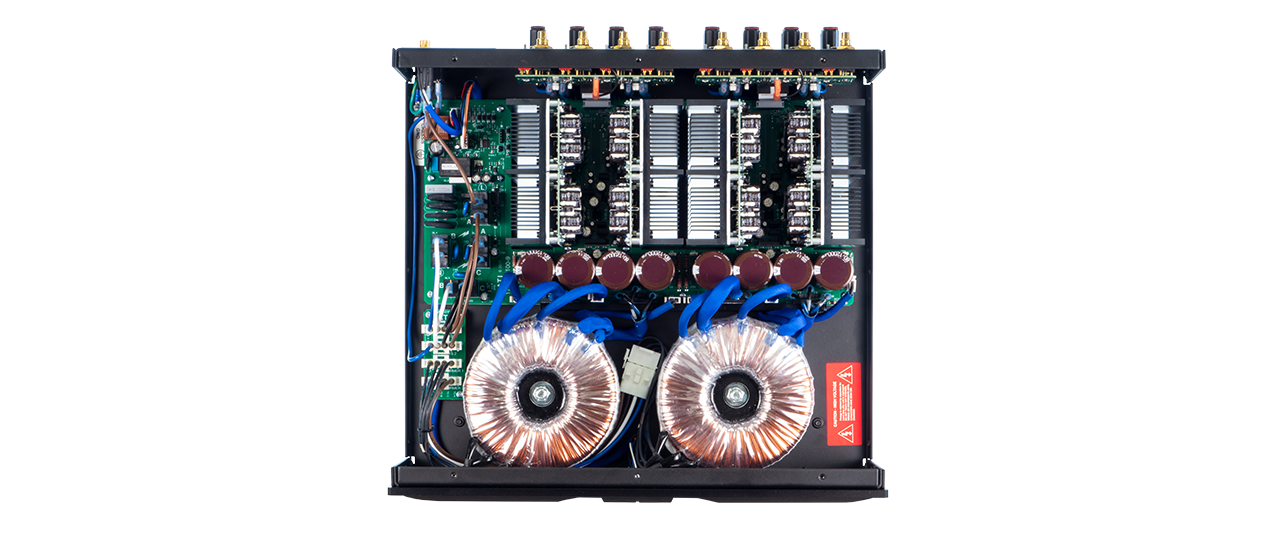
Class D Amplifier with 500 Watts per Channel
www.youtube.com/watch?v=6k14gIWY7ao
Take the sound cure (hifiwellness.com)
HiFi Wellness, LLC uses sound to create vibrations for “Vibrational medicine.” The music vibrations are coupled into the frame of a chair so you feel the music. These vibrations are claimed by the company to provide the following benefits:
- “From remediating a long term affliction with gout to colon and prostate cancer and even early onset diabetes.”
- “The health benefits of Vibro Sensory Stimulation (VSS) are starting to be recognized by the general population. Studies over the last couple of decades have shown that specific frequencies can be supplied in a tactile format that has very profound effects on various human maladies.
“In the following clinical trial it has been discovered that VSS can reverse the uniformly accepted understanding that we lose muscle mass as we age. This is due to a usually more sedentary life style as we begin to experience the side effects of growing old, less energy, muscle stiffness, arthritic pains and so on.
“Now us Baby Boomers have a new technology to play with that might possibly reverse a number of physical health issues normally associated with growing older.”
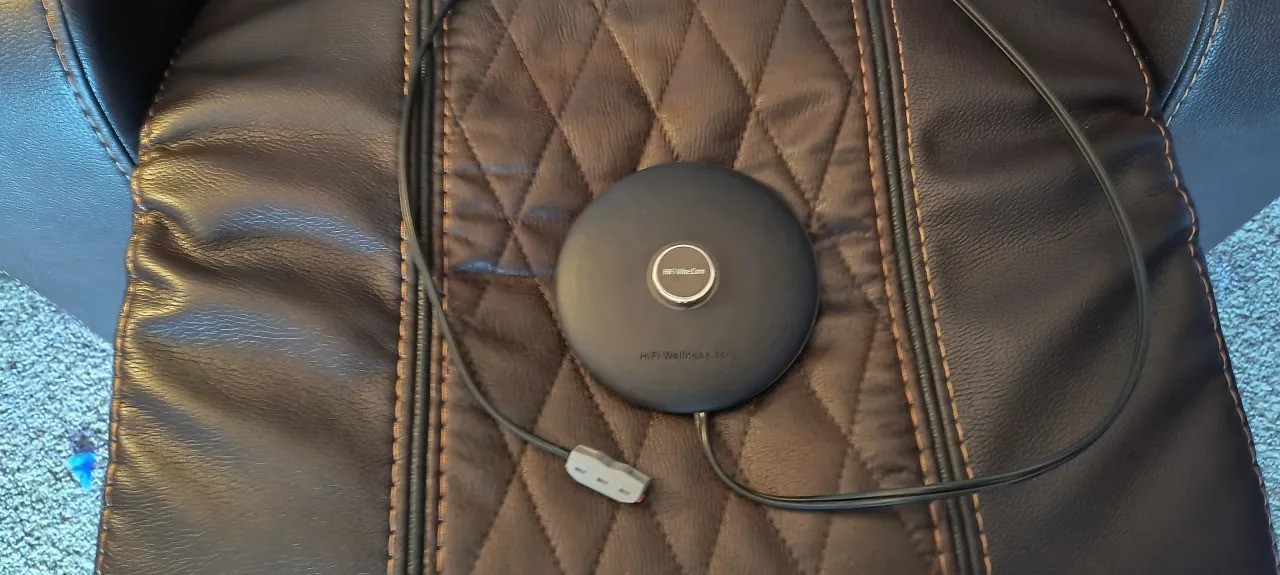
Transducer that Vibrates your chair to improve health
www.youtube.com/watch?v=S1C8cY6do0Q
High-end audio processing (indyaudiolabs.com)
Indy Audio Labs manufactures the Acurus and Aragon brands of high performance audio equipment. The product line includes immersive processors, preamplifiers, and power amplifiers for home theaters, media rooms, and two-channel listening. The company claims these products feature “extreme performance, authentic sound, and intuitive operation.”
- Acurus is the brand name for immersive home cinemas and media rooms.
- Aragon is the brand name for two-channel listening in home and professional environments. Aragon products include a preamplifier, and two amplifier models at 200 Watts and 400 Watts per channel using monoblock amplifiers with Class A/B design.
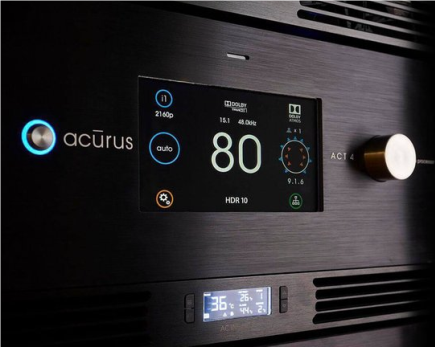
Acurus for Home Theater
www.youtube.com/watch?v=mvgiZsQXaE4
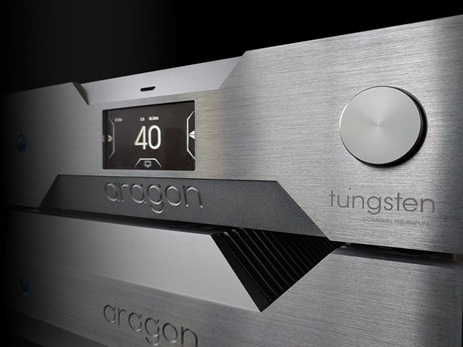
Aragon for Two-Channel Audio
www.youtube.com/watch?v=mvgiZsQXaE4
Audio gear around the house (russound.com)
Russound was founded 1967 in Portsmouth, New Hampshire and was purchased by Maureen Baldwin in 1987. The company makes indoor and outdoor speakers, amps, connectors, infrared controls, and wall plates emphasizing “high quality audio products focused on sonic fidelity, reliability, and ease of use.” Russound displayed a new product at CEDIA: an upscale sound bar.

Three-Channel Sound Bar
www.youtube.com/watch?v=IA5SvU8wTX4
Electronic walls (alchimia-elements.com)
Van Berge Henegouwen (VBH) of the Netherlands makes the Alchimia high fashion marble wall that transforms into a user interface control panel and a TV. According to the manufacturer, “Alchimia are unique and transformative elements of design created for luxury homes. They are crafted from natural and noble materials, and invisibly integrate technology for entertainment and relaxation.” Alchimia features include:
- One-sided or double-sided wall
- Wall size from about 8-by-11.5 feet to 8-by-15 feet
- Display size on the wall: up to 100 inches diagonal
- Panels materials: any kind of natural stone or wood can be used for the central and side panels
- Alchimia control panel displayed on the right or left panel
- Alchimia wall combined with audio
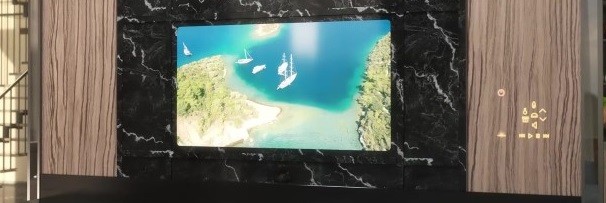
A TV Appears on the Wall with a Control Panel
www.youtube.com/watch?v=mRzTriwLG50
Video walls (ventanadesign.com)
Ventana is a product of Megapixel consisting of MicroLED digital tiles about a foot square and half-an-inch thick weighing 3-1/2 pounds each. These tiles are assembled into a wall display that can be configured for a variety of screen sizes and shapes (aspect ratio, e.g., 16:9 (HDTV), 2.35:1 (typical wide-screen cinema), 2.77: 1 (70 mm IMAX)) by choosing the number and arrangement of digital tiles. The image fills the screen with nearly invisible joints.
The key benefit of a TV assembled from tiles is ease of delivery. This product is appealing to installers who can carry a package of one-foot square digital tiles into a home theater rather than a large TV or heavy projector. Some rooms may not accommodate TVs larger than about 100 inches through doorways. The installer forms a display grid by interlocking the tiles using pucks already embedded in the tile corners for mounting alignment, power, and data connections.
The tiles contain tiny clusters of red, green, and blue (RGB) LEDs in an array. This is very different from a typical LCD TV (Liquid Crystal Display) where the LCD filters and colors white light produced by an array of white LEDs behind the screen. The MicroLED tiles support resolutions of 360 x360 or 240×240 RGB LEDs per tile (0.033-inch/0.8-mm or 0.050-inch/1.2-mm separation).
The Ventana tiles are offered in Liquid Black® glossy for high contrast and Deep Matte finishes, similar to a movie-theater screen image. The image is four times brighter than an OLED TV screen.
Each tile consumes 45 Watts per panel peak and 25 Watts per panel average power. This may require dedicated electricity circuits: 144 panels for a 220-inch diagonal screen have a maximum power rating of 6480 Watts (compared to 5600 Watts for a typical clothes drier), although only a full white screen would draw this power. The average power draw is 3600 Watts (a 15-Amp circuit can deliver 1800 Watts).
MicroLED TV costs about $90,000 to $200,000. However, price drops are expected as this technology is adopted.
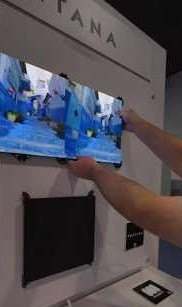
Assembling a Wall TV from MicroLED Digital Tiles
www.youtube.com/watch?v=VBli54ndGCs
The offbeat and unusual
I end this report with a few unusual products that got my attention at the CEDIA Expo.
Laundry automation (laundryjet.com)
Laundry Jet offers a vacuum powered laundry chute that transports laundry up to 400 feet from any room with ports installed to the laundry room.
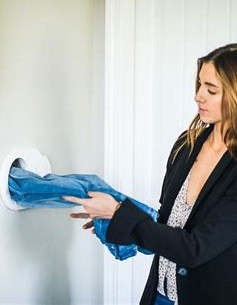
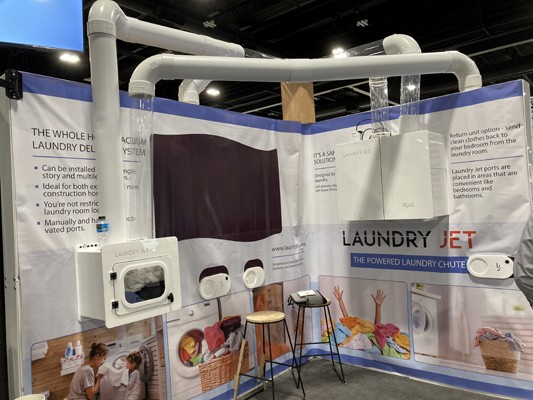
Home Automation for the Laundry
www.youtube.com/watch?v=x74dyPvIyEc
Hiding the TV (cseed.com)
Many companies have offered TVs that can be hidden when not used. Some rise from a pedestal; others are lowered from the ceiling; some are covered with artwork. C SEED Inc., the US subsidiary of C SEED Entertainment in Austria, offers a unique way to hide a TV when it is not being viewed by folding it like a fan and slipping it into a slot in the floor. The image below shows the unpacking of the TV. A company representative at CEDIA quoted the folding TV on the show floor at $280,000.
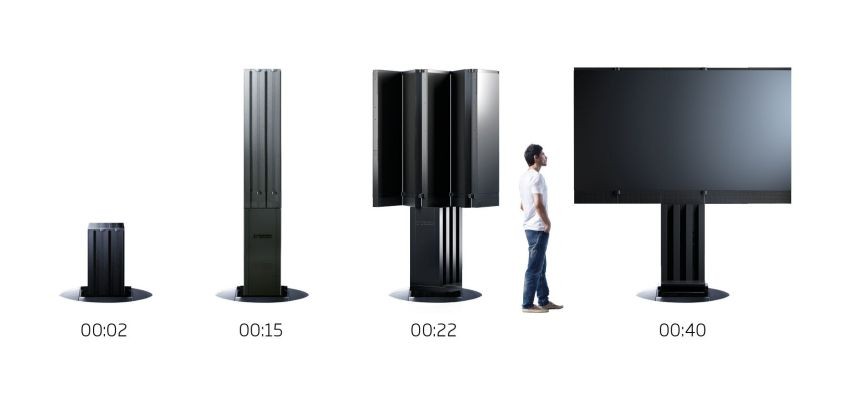
Unpacking the TV
www.youtube.com/watch?v=fSfNzsY0LSU
© Copyright 2025 Kenneth P. Wacks, All rights reserved

Dr. Ken Wacks has been a pioneer in establishing the home systems industry and a management advisor to clients worldwide. His business specialties include IoT (Internet of Things), cybersecurity, standards for home and building systems, AI-based energy management including renewables, and digital media networks. He also provides due-diligence for investors and expert witness services for litigants including patent, employment non-compete, and trade-secret cases. Please visit kenwacks.com or contact Ken at +1 781 662-6211; [email protected]; www.kenwacks.com
1. IFA is a tradeshow in Berlin, Germany that has been running annually since 1924 (except for 10 years around World War II). IFA is billed as “The world’s largest consumer and electronics show.” TV was introduced at IFA in the 1920s. Albert Einstein opened the 1930 IFA show. Information about IFA is available at www.ifa-berlin.com.
2. Jason McGraw, Vice President of the Emerald Group, the company hired by CEDIA to manage the exposition.


